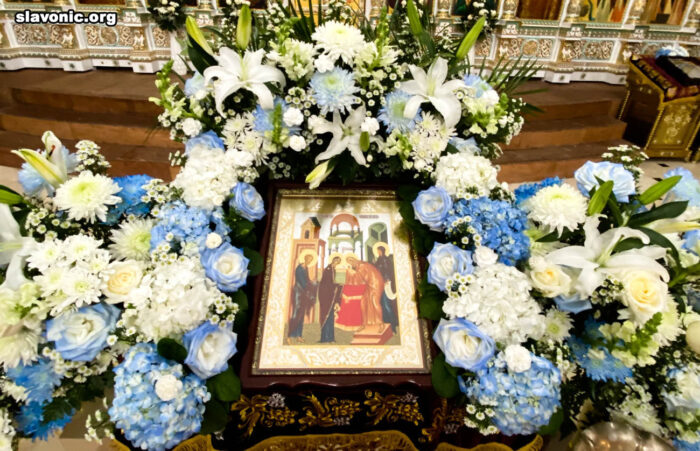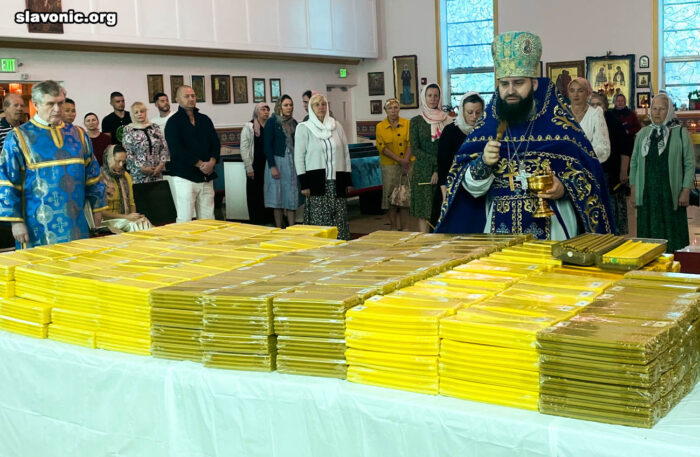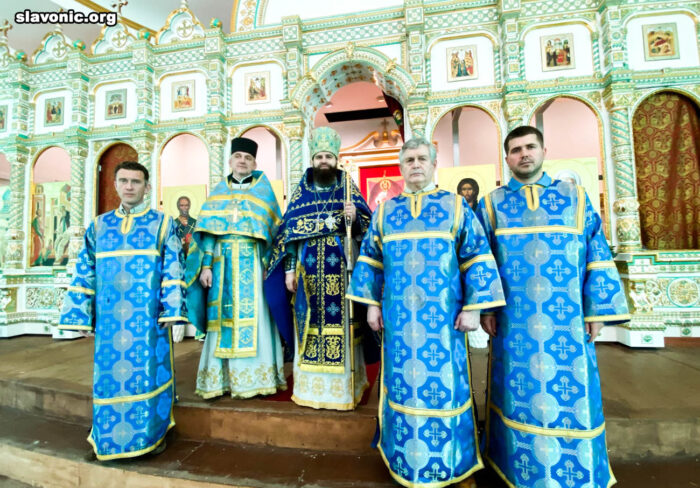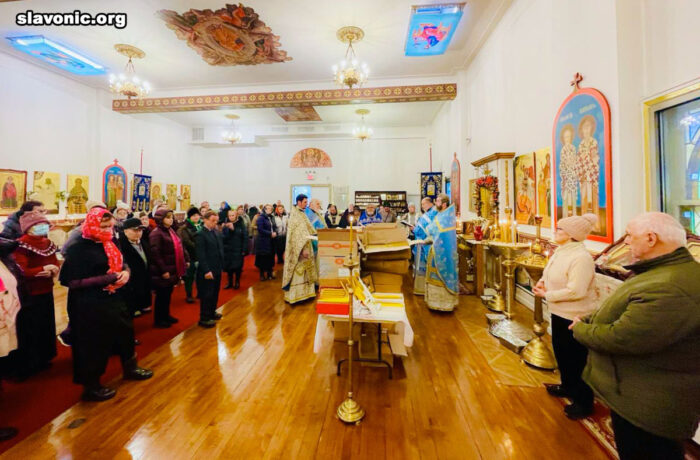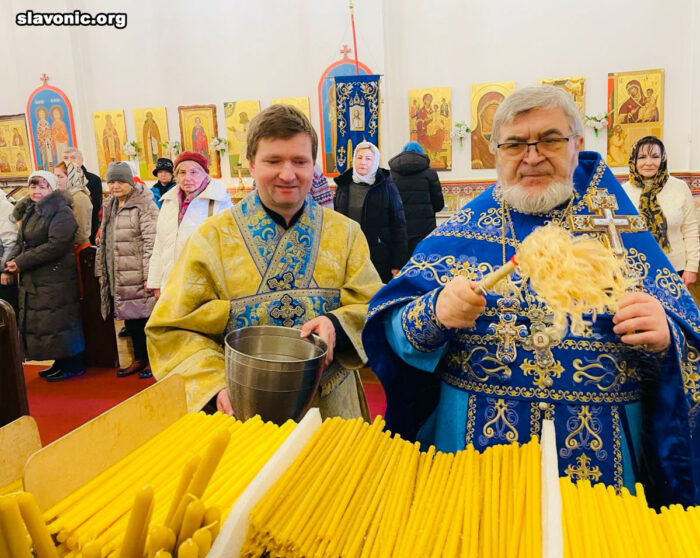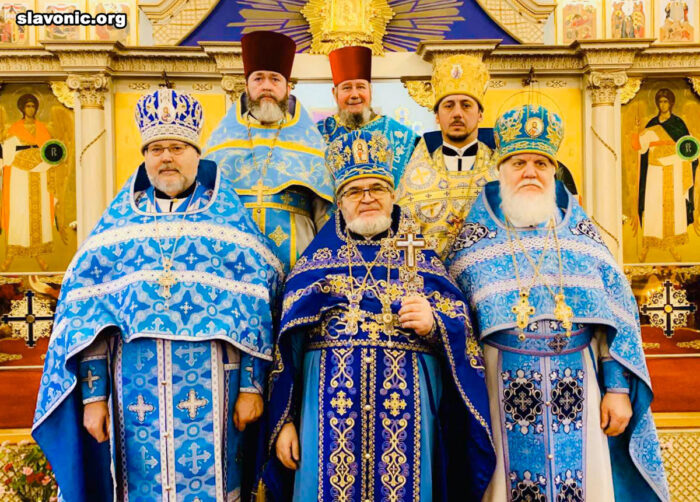
The Feast of the Presentation of the Lord Celebrated in the Cathedrals of the Slavic Orthodox Vicariate
February 16, 2024On February 15 (February 2 on the Julian Calendar) the Orthodox Church celebrates the Presentation of Our Lord to the Temple, one of the Twelve Great Feasts. This holiday ends the Christmas Cycle, which began on January 7 (December 25 Old Style).
The Gospel events that form the basis of the feast occurred on the 40th day after the birth of Jesus Christ. According to the prescription of Judaic Law, the Mother of God and the righteous Joseph the Betrothed brought the infant Jesus to the Temple of Jerusalem to dedicate their firstborn to God and make the proper sacrifice for him (two pigeons). In the Temple, the Holy Family was met by the Elder Simeon, who was according to Tradition, about 300 years old. Simeon had lived to such an advanced age because he was promised by God that he would not die until he saw the Messiah come into the world. The Elder understood that the infant was the Savior of the world proclaiming, “Sovereign Lord, as you have promised, you may now dismiss your servant in peace. For my eyes have seen your salvation…” (Luke 2:29-32). The name of the feast in Church Slavonic is “Sretenie” meaning “meeting,” which gives it the spiritual meaning of the meeting of humanity with God.
At the Cathedral of St. Matrona in Miami, the holiday services were led by Bishop-Elect of Nikopolis Alexander, Vicar of the Slavic Orthodox Vicariate. Archpriest Maxim Pliskov concelebrated with the Rector. At the Brooklyn Cathedral of St. John the Forerunner & Baptist, festive services were led by its Rector, Protopresbyter of the Ecumenical Throne Oleksandr Belya. The concelebrants were Archpriests Boris Babeshko, Igor Tarasov, and Vasily Deyak, Fr. Petr Prakaptsov, and Protodeacon George Hero.
Before the Divine Liturgy, the traditional consecration (blessing) of candles, which are called “Sretensky” candles, was performed in accordance with the Orthodox Church tradition. The candle is a symbol of love, thankfulness to Our Lord, zealous prayers to God, and the enlightenment of the believing heart by the Holy Spirit. The above-mentioned quote of St. Simeon, the God-Receiver, is included in the dismissal hymn of the feast. The Savior is called “a light for revelation to the Gentiles (pagans.)” Therefore, once a year on the day of the Lord’s Presentation, candles are traditionally blessed. Believers light them at home during morning and evening prayers. Most importantly, they are lit during prayers in the moments when Our Lord’s help is especially needed, such as in illness or sorrow, deciding important issues, or avoiding troubles in life.

